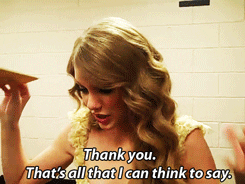
A simple “thank you” can truly go a long way. Whether it’s a private Slack message, a public shout-out, or a small gift of recognition, the act of showing gratitude can lift anyone’s spirits.
As you close out an exciting week, quarter, or year with your team, you hopefully feel #blessed for the hard work they put in every day.
But it’s important to remember that feeling blessed and expressing gratitude are two different things. Let’s talk about why and how your attitude of gratitude impacts your team.
The hidden benefits of gratitude
Demonstrating gratitude has impacts that go far beyond acknowledging a job well done. In fact, some of the benefits are quite profound.
Increased empathy and sharper decision-making
In a study by a group of researchers at University of Southern California (USC), 23 participants were shown video testimonials of Holocaust survivors describing gifts they received from strangers during their struggles to survive (such as clothing, food, etc.) The participants were then asked to pretend they were the survivors and rate their level of gratitude for the gifts.
The researchers used magnetic resonance imaging (MRI) during this exercise and found that this expression of gratitude was directly correlated with brain activity that is associated with empathy, impulse control, emotion, and decision-making.
Higher self-worth and motivation for prosocial behavior
Gratitude is also effective beyond the individual level.
In a 2011 study, Adam Grant and Francesca Gino found that a little thanks goes a long way. In four experiments, they found that participants who were thanked for their participation experienced stronger feelings of self-efficacy and social worth, which motivated them to engage in prosocial behavior. The study also found that when it comes to prosocial behavior, feeling valued is even more important than feeling competent.

Healthier teams and more motivated employees
And in a study of 1,700 employees by the American Psychological Association (APA), researchers found that more than half of the employees who were looking for new jobs felt under-appreciated and undervalued. In other words, gratitude expression increased a person’s feeling of being valued and in turn, encouraged them to put in more effort during the next encounter with the person who expressed thanks and appreciation.
Bottom line: This culture of gratitude is extremely important to motivate employees to do their best work and have a high level of job satisfaction.
5 ways to show gratitude to your team
It’s important, now more than ever, to give thanks. Here are a few ways to show that much-needed, hug-inducing appreciation and recognition towards your team and colleagues.
1. Provide sincere and consistent recognition
“Feeling gratitude and not expressing it is like wrapping a present and not giving it.” – William Arthur Ward
Yes, showing gratitude is as simple as saying “thank you.” However, you should take the time to recognize this person for something specific they did such as delivering that project under deadline, providing exceptional support to a team member, or even helping boost morale during a stressful time.

Since you’re taking the time to provide personalized recognition, you can also take the time to learn how this person likes to receive it. Some people love public praise and others appreciate a private pat on the back.
How can you tell? You can simply ask them in a 1:1 meeting as to how they like to receive compliments. If they like private recognition, then write them a thank-you note or send a direct message on Slack. If they prefer public acknowledgement, then go ahead and share those congratulations at the next weekly team meeting.
Understanding how your team members like to accept gratitude can go a long way in showing that you truly care about their preferences.
2. Give a thoughtful gift
A common way to show appreciation for your employees or coworkers is to give a physical or monetary gift. This is a common ritual in Japanese workplaces. It’s called omiyage.
Japan has a strong culture of gift-giving and it’s not restrained to personal relationships. Omiyage is the ritual of bringing your coworkers a gift or souvenir, such as a box of local goods, when you take a trip or vacation. It’s a way to show gratitude and good intentions to your coworkers who have “covered” for you while you were out of the office.
So if you can’t find the words, then give a great gift for that person on your team who deserves some recognition. Wrap that thanks with a bow and show them how grateful you are for their efforts at work.
3. Get your team involved
Giving thanks to others directly affects their perception of appreciation and value, so what better way to do this than by involving your team in important projects and tasks?
A study by the Society of Human Resource Management revealed that 63% of respondents listed the ability to use their skills as the top driver of their job satisfaction.
Next time you have the opportunity, keep the correlation between gratitude and appreciation high by involving your employees and team members in projects and tasks that show off and strengthen their skills. For example, if you have a new product launch coming up, identify the people on your team who have the skill sets and would be excited to participate in an impactful way for the company.
4. Listen with intent
Believe it or not, listening is another simple but impactful way to practice gratitude and to show that you value your team. Especially as a leader, you may assume you should be the one doing all the talking and driving. But the best leaders are the ones who take the time to really listen to their employees and colleagues.
One of the main purposes of expressing gratitude is to show your appreciation for one another. So there’s no better way to show appreciation than by listening intently to your team’s ideas, dreams, and feedback. The next time you are in a meeting or having a conversation with someone on your team, make an effort to listen with intent.
Silence those email notifications, remove any other distractions whether it’s an in-person conversation or a video call, and put that listening hat on.
5. Create a kudos culture
“The way to develop the best that is in a person is by appreciation and encouragement.” – Charles Schwab
At the end of the day, your team wants to feel appreciated and valued. But this culture shouldn’t be fostered by one person or just a handful of people.
People in your company may be hesitant to express gratitude or applaud someone for a job well done, so you can be the one to facilitate opportunities to provide this recognition.

For example, your weekly team meeting can have a 10-minute “thanks session,” in which the floor is open for anyone on the team to recognize a colleague for going the extra mile that week. If your team is always chatting on Slack, then create a designated #kudos channel for anyone to give a shout-out to a coworker.
This collective approach to expressing gratitude will help the practice become second nature to everyone on your team.
Give thanks and watch your team’s productivity prosper
If you’re looking for ways to motivate your team, a simple thank you may be the key ingredient. Don’t wait until your team has an in-person meeting or a big occasion to express all your gratitude at once. Consistent and regular expressions of gratitude are essential to fostering and maintaining a thankful culture.
Now, go ahead and give some thanks to your team They deserve it.
Next: 5 Ways To Process Feedback At Work Without Triggering A Stress Response







































